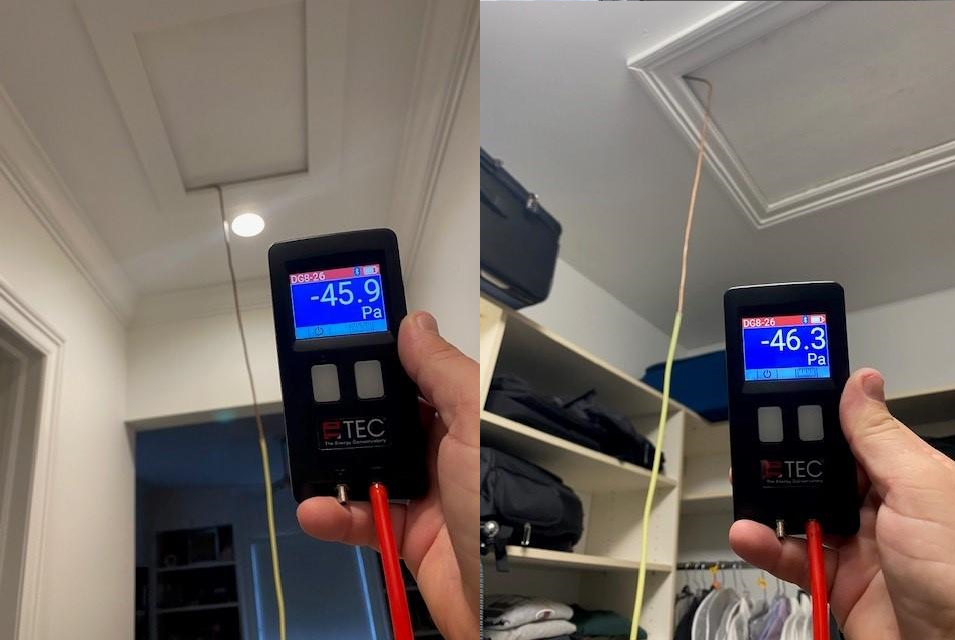Get Tech Tips
Subscribe to free tech tips.
3-Wire and 4-Wire Condensing Fan Motor Connection

Diagram courtesy of Emerson
New techs have a common question of how to wire a condensing fan motor for 3 vs. 4 wires. Jesse Grandbois submitted this tech tip to help make it simple. Thanks, Jesse!
This tech tip is a quick one on the difference between wiring universal condenser fan motors and why brown + white is the same wire as white. This one seems to confuse even experienced technicians, but it's actually very simple once you see it. Now, keep in mind that wire colors ACTUALLY MEAN NOTHING, but the colors tend to be consistent on service replacement motors. As always, refer to the wiring diagram on the particular motor you are using.
I'll provide a diagram and explain the wires below.
Here's the 3-wire method:
- White wire from the condenser fan motor to one side of power on the contactor (T1) and jumped to one side of the fan capacitor. This is AC power and not a dual capacitor, so the terminal side does not matter.
- Black wire from the condenser fan motor to the other side of power on the contactor (T2).
- Brown wire from the condenser fan motor to the other side of the capacitor opposite the jumper wire.
- Cap off brown + white (unused).
Now, for your 4-wire method:
- White wire from the condenser fan motor to one side of power on the contactor (T1).
- Black wire from the condenser fan motor to the other side of power on the contactor (T2).
- Brown wire from the condenser fan motor to the capacitor. Again, this is AC power and not a dual capacitor, so the terminal side does not matter.
- Brown + white wire to the other side of the capacitor.
As you can see, the only difference is that there is no jumper from the contactor to the capacitor. That is because the brown + white and the white is the same wire. They're joined inside the motor. The brown wire with the white stripe is only there for convenience.
If you want to prove that the white and brown w/ white stripe are the same, take an ohmmeter and test between the two. You will find that it either reads zero or very low ohms, proving that they are directly connected within the motor.
—Jesse Grandbois
P.S. – If you would like to understand 3 or 4-wire connections within the entire process of replacing a condenser fan, please check out this article.










Comments
Usually choose the 4 wire method and have always trained guys that way. Is there a difference in operation between methods? It’s always been my understanding that it doesn’t make a difference. I teach the four wire method because it is impossible to get confused.
Usually choose the 4 wire method and have always trained guys that way. Is there a difference in operation between methods? It’s always been my understanding that it doesn’t make a difference. I teach the four wire method because it is impossible to get confused.
In my opinion it would make no performance difference. I don’t see how it could.
In my opinion it would make no performance difference. I don’t see how it could.
Good morning,
You can also just jump common from original cap. Correct?
Good morning,
You can also just jump common from original cap. Correct?
That’s the 3 wire method you’re talking about like this http://i.imgur.com/Yk5JRdn.png (which is the same as http://i.imgur.com/C06Hzap.png 4 wire) because the brown+white and the white is the same wire.
Here’s another diagram I found on google imageshttp://photobucket.com/gallery/http://s151.photobucket.com/user/Houston204/media/MotorWiring.jpg.html
That’s the 3 wire method you’re talking about like this http://i.imgur.com/Yk5JRdn.png (which is the same as http://i.imgur.com/C06Hzap.png 4 wire) because the brown+white and the white is the same wire.
Here’s another diagram I found on google imageshttp://photobucket.com/gallery/http://s151.photobucket.com/user/Houston204/media/MotorWiring.jpg.html
Yes, my comment was for the 3 wire & what I was saying was instead of jumping from the starter/contactor you can also jump common direct from the cap.
Yes, my comment was for the 3 wire & what I was saying was instead of jumping from the starter/contactor you can also jump common direct from the cap.
I often use and recommend the three wire connection when wiring to a dual cap
I often use and recommend the three wire connection when wiring to a dual cap
Thanks for posting! This is great!
Thanks for posting! This is great!
ya looks good .
ya looks good .
Hello, I desire to subscribe for this web site to obtain most up-to-date updates, so where can i do it please assist.
Hello, I desire to subscribe for this web site to obtain most up-to-date updates, so where can i do it please assist.
To leave a comment, you need to log in.
Log In